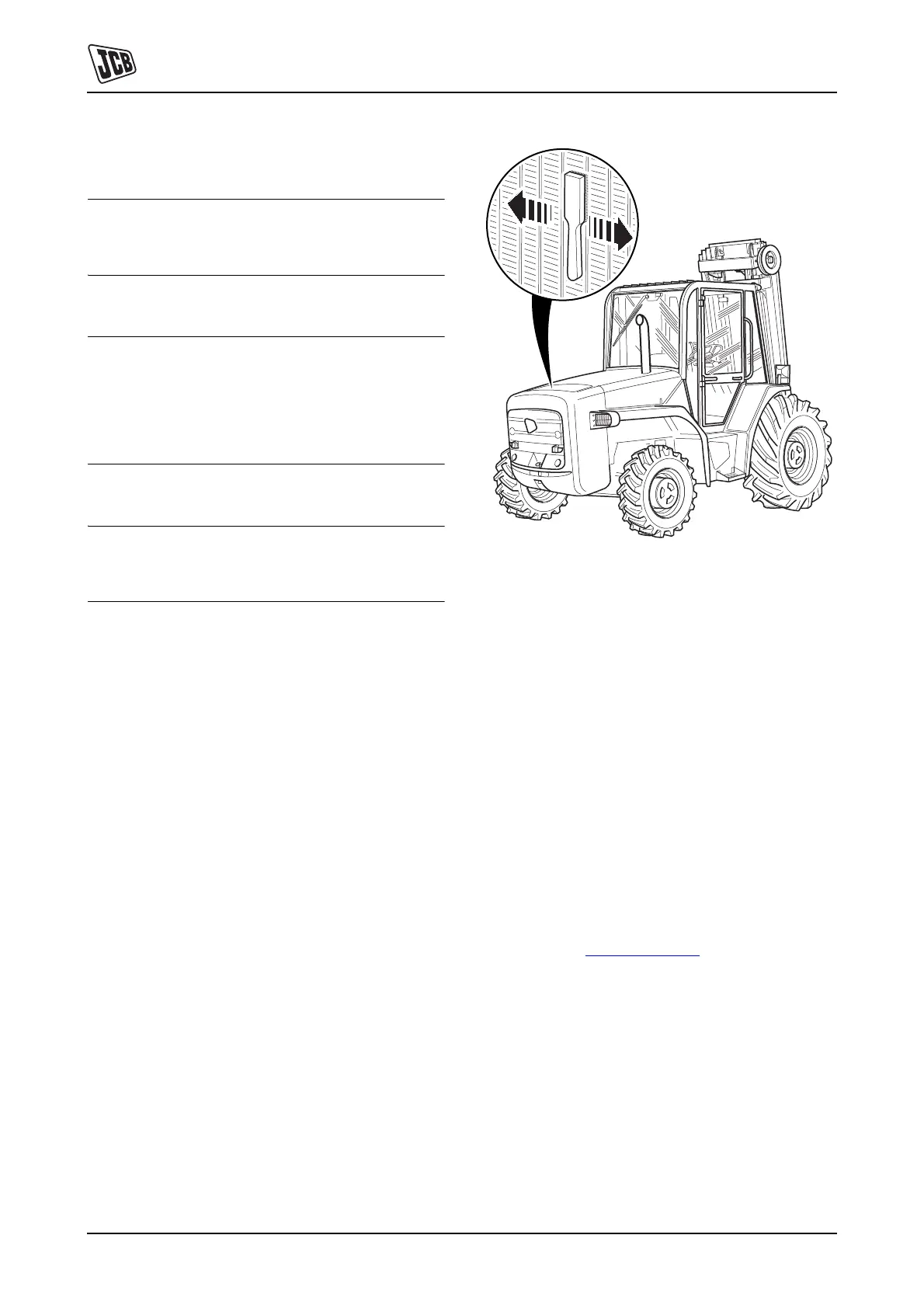Routine Maintenance
Cleaning the Machine
109 109
9811/5700-7
Cleaning the Machine
!MWARNING
To avoid burning wear personal protective equipment
(PPE) when handling hot components. To protect your
eyes, wear personal protective equipment (PPE) when
using a brush to clean components.
HYD-1-3_3
!MWARNING
Airborne particles of light combustible material such
as straw, grass, wood shavings, etc. must not be
allowed to accumulate within the engine compartment
or in the propshaft guards (when fitted). Inspect these
areas frequently and clean at the beginning of each
work shift or more often if required. Before opening
the engine cover, ensure that the top is clear of debris.
5-3-1-12_3
!MCAUTION
Never use water or steam to clean inside the cab. The
use of water or steam could damage the on-board
computer and render the machine inoperable. Remove
dirt using a brush or damp cloth.
8-3-4-8
Pay particular attention to the following areas:
1 Cleaning the Tubes/Fins
If the radiator tubes/fins get clogged the radiator will
be less efficient.
a Remove the radiator grille.
b Open the bonnet and clean the radiator. Brush off
all debris from the cooler tubes and fins. Make
sure the loosened material is brushed out of the
cooler enclosure.
c Close the bonnet and fit radiator grille.
Fig 73.
2 Engine
Do not allow mud to build up on the engine and
transmission. Pay particular attention to the exhaust
area, remove all combustible material.
The engine or certain components could be damaged
by high pressure washing systems, special
precautions must be taken if the engine is to be
washed using a high pressure system.
Note: Do not place the jet nozzle closer than 600mm (24
in) to any part of the engine.
Do not attempt to clean any part of the engine while it
is running. Stop the engine and allow it to cool for at
least one hour.
a Disconnect the battery.
b Do not aim the jet wash directly at the fuel injector
seals F. K
Fig 74. ( T 110).
